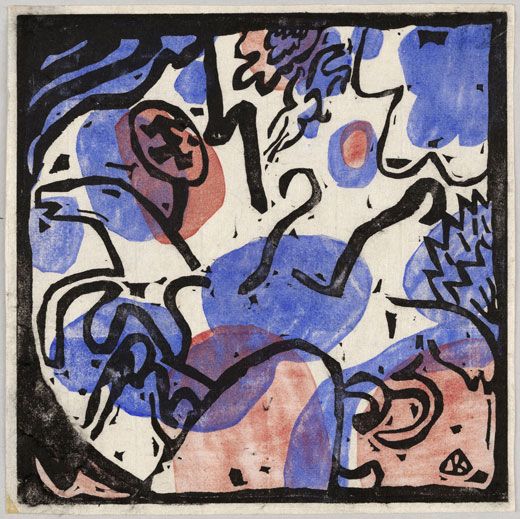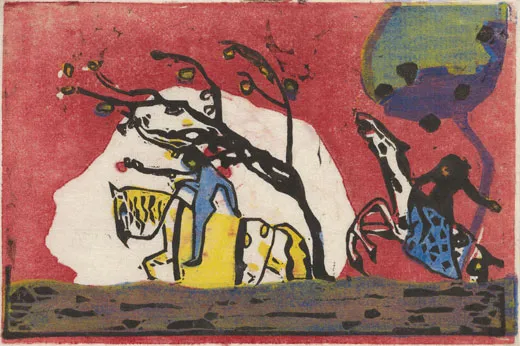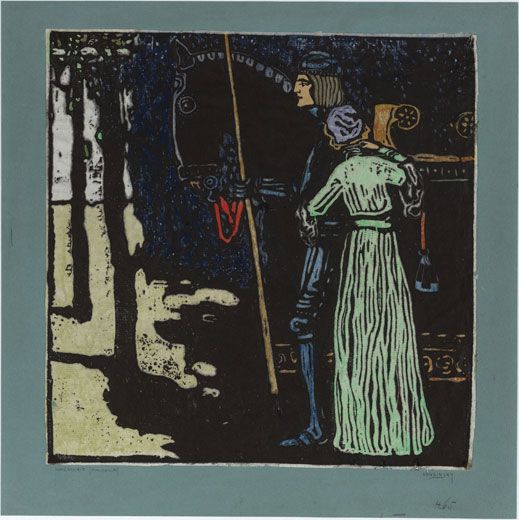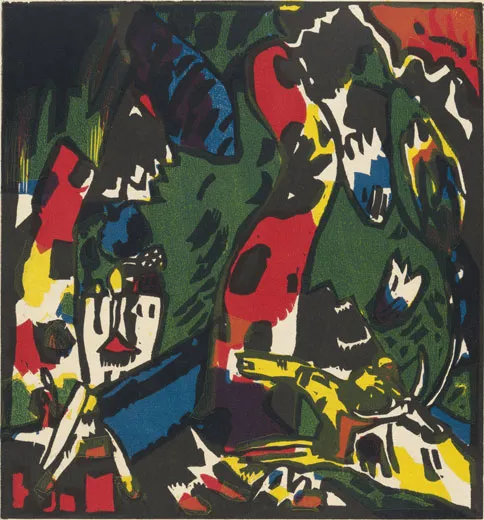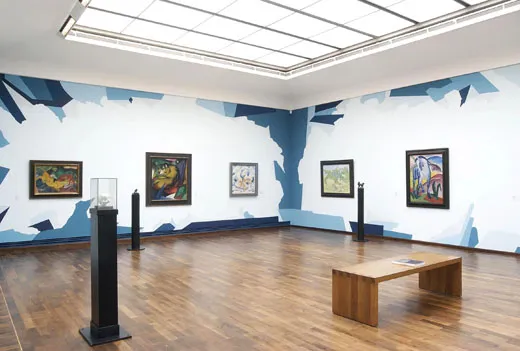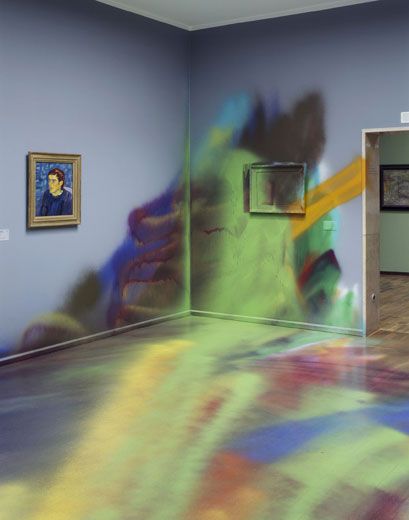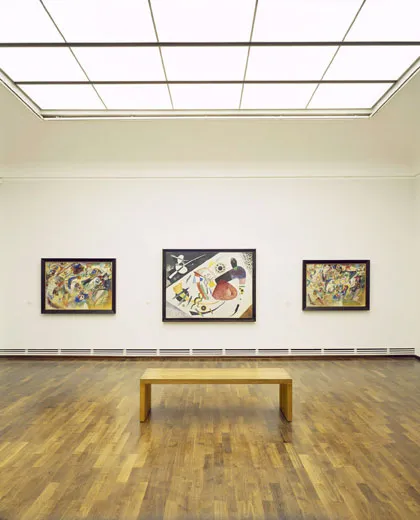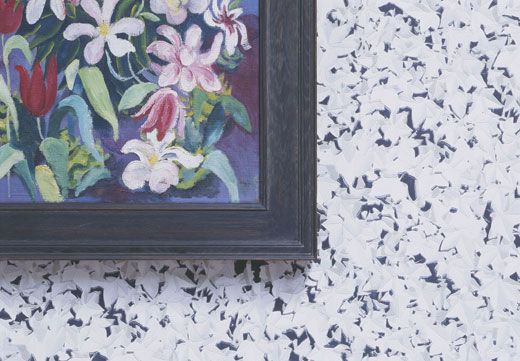Feeling Blue: Expressionist Art on Display in Munich
Visitors catch a glimpse of the groundbreaking, abstract art created bypreeminent 20th century expressionists
/https://tf-cmsv2-smithsonianmag-media.s3.amazonaws.com/filer/bluerider_631.jpg)
If you spot a blue horse on your next trip to Munich, chances are that you've either been enjoying too much of the local brew, or you're admiring the art at the Städtische Galerie im Lenbachhaus (State Gallery in the Lenbach House).
The Lenbachhaus, a small museum located northwest of the city center, pays homage to the Blaue Reiter (Blue Rider) group, a loose association of kindred spirits founded in 1911 by Wassily Kandinsky, Franz Marc and other artists. Though the group's collective work was cut short by the First World War, its ideas marked a major turning point in art history – the birth of Abstract Expressionism.
"Men are blinded. A black hand covers their eyes," Kandinsky wrote in an essay for the 1912 "Blaue Reiter Almanac," an unusual catalogue that combined a wide mix of art forms from many times and cultures.
The Blue Rider artists broke with tradition by rejecting objective ideas of what made art "good." What really mattered, they argued, was what each work of art expressed about its creator's inner state. Expression could take any form – a blaze of brushstrokes; a sprinkle of musical notes; a carved totem or a child's sketch – and the group's exhibitions and almanac showcased the gamut.
"We should never make a god out of form...it is not form (matter) that is generally most important, but content (spirit)," Kandinsky declared in the Almanac. "We should strive not for restriction but for liberation…only on a spot that has become free can something grow."
The Russian-born Kandinsky moved to Munich to study art when he was 30 years old, in 1896. It was a time when many new ideas – such as Jugendstil, a decorative style inspired by the arts and crafts movement -- were sprouting up amid the city's generally staid art scene, but Kandinsky didn't find his niche in any of them. In 1909, he joined a new group called the "New Artists' Association of Munich" where he met the German painter Franz Marc, who shared his view of art as a medium for personal and spiritual expression.
By 1911, Marc and Kandinsky were collaborating to publish an almanac that would be a kind of manifesto for expressionist artists. The name "Blue Rider" sounds a bit mysterious, but it was simply a title they came up with while chatting over coffee one day, according to Kandinsky.
"We both loved blue, Marc liked horses and I riders. So the name came by itself," he explained years later.
The first Blue Rider exhibition was thrown together hastily in December 1911, after the New Artists' Association rejected one of Kandinsky's paintings for its winter exhibition. Kandinsky and Marc, joined by the painter Gabriele Münter (Kandinsky's mistress of the past decade), left the group in protest and put together their own show -- literally right next to the NAA exhibition, since the gallery owner was a friend of theirs – which also included works by Robert Delaunay, Henri Rousseau, August Macke, and the composer Arnold Schoenberg.
Their eclectic exhibition was not well reviewed in the press, but that didn't stop the artists from organizing a second exhibition and publishing the Almanac the following year.
Kandinsky delivered a stinging rebuke to the critics in his essay about form: "The ideal art critic… would need the soul of a poet… In reality, critics are very often unsuccessful artists, who are frustrated by the lack of creative ability of their own, and therefore feel called upon to guide the creative ability of others."
The Almanac proved more popular than the publisher had expected, and a second edition was published in 1914. But although Marc and Kandinsky corresponded frequently about publishing a second volume, it never happened.
World War I broke out in 1914, forcing Kandinsky back to Moscow, where he stayed for the next eight years. Marc joined the German army, and died on a French battlefield in 1916, at age 36. Another Blue Rider painter, August Macke, was also killed in the war.
Kandinsky's career continued to evolve and flourish until the Second World War. He died in France at age 78, by then considered one of the founding fathers of abstract painting.
In 1957, Gabriele Münter celebrated her 80th birthday by donating her large collection of Blue Rider works to the Lenbachhaus. Today, visitors to the museum can contemplate Kandinsky's paintings inspired by folk art, Marc's mystical scenes of forest animals bathed in beams of color, and many works by other Blue Rider artists including Münter, Macke, Paul Klee, Marianne von Werefkin and Alexey von Jawlensky.
And yes, you'll even see some blue horses and riders.
NOTE: The Lenbachhaus is scheduled to close for major renovations in the spring of 2009, but for the next few months, it will be an even richer treasure trove than usual for Kandinsky fans with two special exhibitions. All of the artist's prints and graphic art – some 230 pieces – are on display at the Lenbachhaus through late February. And across the street, its sister gallery the Kunstbau is hosting a new Kandinsky retrospective in collaboration with New York's Guggenheim Museum and Paris's Centre Georges Pompidou. The exhibition will travel to Paris in April, and then on to New York in September 2009.
